15 start with S start with S
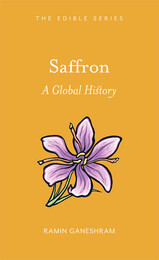
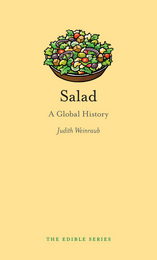
As Weinraub shows, salads started as a simple assemblage of wild plants gathered from the hillsides, a necessary source of calories and a pleasant contrast to the gamey meats that usually comprised a meal. It was only in later centuries that their nutritional value became known, and they assumed their place as the quintessential health food. Over that time, we learned to lavish them with oils, vinegars, juices, creams, cheeses, seeds, nuts, fruits, and proteins, and we learned to give them special names: chef, cobb, and caesar, not to mention niçoise, panzanella, and tabbouleh. Appetizingly written and freshly illustrated, this book will make a perfect accompaniment to any meal—or a main course in itself.
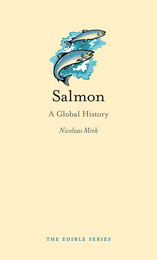

The humble peanut butter and jelly or bologna and cheese or corned beef on rye—no matter your cooking expertise, chances are you’ve made and eaten countless sandwiches in your lifetime. It’s quick, it’s simple, and it’s open to infinite variety and inventiveness. If there’s something bread- or bun-like in your cupboard, there is a sandwich waiting to happen.
Though sandwiches are a near-universal food, their origin can be traced to a very precise historical figure: John Montagu, the Fourth Earl of Sandwich, who, sometime before 1762 being too busy to stop for dinner, asked for some cold beef to be brought to him between two slices of bread. In Sandwich,award-winning food writer Bee Wilson unravels the mystery of how the Earl invented this most elementary but delicious way of eating. Wilson explores what sandwiches might have been like before the eighteenth century, why the name sandwich stuck, and how the Earl’s invention took off so quickly around the globe.
Wilson brings together a wealth of material to trace how the sandwich has evolved, looking at sandwiches around the world, from the decadent meatball hoagie to the dainty cucumber tea sandwich. Loved the world over, this popular food has surprisingly never before been the subject of a book-length history until now.

Tebben begins in fifth-century China with its many fermented sauces, then follows them along trade routes from East to West as they become a commodity and helped seafarers add flavor to their rations. Tracing the evolution of food technology, she explores the development of the art of sauce creation and examines the foams, ices, and smokes—barely recognizable as sauces—that are found in the increasingly popular world of molecular gastronomy. Tebben also investigates the many controversies that have sprung up around sauces—how salsa has overtaken ketchup in popularity in the United States, and how British Worcestershire sauce actually originated in India—and offers tantalizing historical comparisons such as that between ketchup and Tabasco. A charming look at the source of soy sauce, mole, beurre blanc, and more, Sauces will please expert chefs and novice sauciers alike.

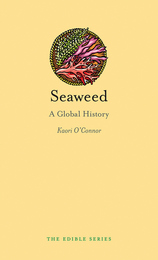
O’Connor introduces readers to some of the 10,000 kinds of seaweed that grow on our planet, demonstrating how seaweed is both one of the world’s last great renewable resources and a culinary treasure ready for discovery. Many of us think of seaweed as a forage food for the poor, but various kinds were often highly prized in ancient times as a delicacy reserved for kings and princes. And they ought to be prized: there are seaweeds that are twice as nutritious as kale and taste just like bacon—superfood, indeed. Offering recipes that range from the traditional to the contemporary—taking us from Asia to Europe to the Americas—O’Connor shows that sushi is just the beginning of the possibilities for this unique plant.
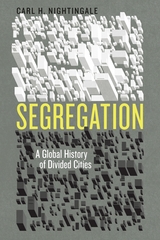
When we think of segregation, what often comes to mind is apartheid South Africa, or the American South in the age of Jim Crow—two societies fundamentally premised on the concept of the separation of the races. But as Carl H. Nightingale shows us in this magisterial history, segregation is everywhere, deforming cities and societies worldwide.
Starting with segregation’s ancient roots, and what the archaeological evidence reveals about humanity’s long-standing use of urban divisions to reinforce political and economic inequality, Nightingale then moves to the world of European colonialism. It was there, he shows, segregation based on color—and eventually on race—took hold; the British East India Company, for example, split Calcutta into “White Town” and “Black Town.” As we follow Nightingale’s story around the globe, we see that division replicated from Hong Kong to Nairobi, Baltimore to San Francisco, and more. The turn of the twentieth century saw the most aggressive segregation movements yet, as white communities almost everywhere set to rearranging whole cities along racial lines. Nightingale focuses closely on two striking examples: Johannesburg, with its state-sponsored separation, and Chicago, in which the goal of segregation was advanced by the more subtle methods of real estate markets and housing policy.
For the first time ever, the majority of humans live in cities, and nearly all those cities bear the scars of segregation. This unprecedented, ambitious history lays bare our troubled past, and sets us on the path to imagining the better, more equal cities of the future.
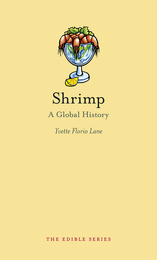
In this lively and entertaining book, Yvette Florio Lane embarks on a lively historical tour of the production and consumption of Earth’s beloved crustacean. Over the centuries, shrimp have been hailed as an indulgence, a luxury, and even an aphrodisiac. They have been served to show hospitality, demonstrate status, and celebrate special occasions. They can also be culinary ambassadors, inspiring novel cooking techniques and the introduction of new tastes around the world. Demand for the creatures, however, has now exceeded supply. Whether fished from the ocean with nets or deep-sea trawlers, or raised in modern aquaculture farms, the world produces and eats more (and cheaper) shrimp than ever before, but often at great cost. Shrimp is a delicious, fascinating, and troubling history of a culinary favorite.

Singapore in Global History explores Singapore’s past and present through the lens of global history. It analyses Singapore as a city-state and adds an interdisciplinary perspective to the study of its growth. The studies presented here demonstrate that Singapore’s history and growth have implications that extend to Southeast Asia and the world. This book will be of interest to economists, sociologists and political scientists, as well as those interested in imperial history, business history, and networks.

More than eighty years before the invention of Coca-Cola, sweet carbonated drinks became popular around the world, provoking arguments remarkably similar to those they prompt today. Are they medicinally, morally, culturally, or nutritionally good or bad? Seemingly since their invention, they have been loved—and hated—for being cold or sweet or fizzy or stimulating. Many of their flavors are international: lemon and ginger were more popular than cola until about 1920. Some are local: tarragon in Russia, cucumber in New York, red bean in Japan, and chinotto (exceedingly bitter orange) in Italy. This book looks not only at how something made from water, sugar, and soda became big business, but also how it became deeply important to people—for fizzy drinks’ symbolic meanings are far more complex than the water, gas, and sugar from which they are made.
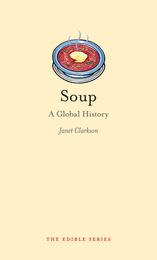
From the restorative powers of chicken soup on a sick day to the warmth of a bowl of chowder on a wintry night, there is no food quite as comforting and emblematic of home as soup. Soup, as Janet Clarkson tells us, is the first true culinary creation of humanity, and it has made a long journey from the prehistoric cave to the kitchen table and the white linens of Michelin-starred restaurants.
Tracing its myriad reinventions through history and across the globe, Clarkson argues in Soup that it is the only truly universal dish—every culture in the world makes soup, and it is widely valued as a dish adaptable for any situation. From the swill of the poorhouse to the most delicately crafted consommé, Clarkson explores how soup got its name and describes the different roles of soup in Eastern and Western cuisine. Featuring the national soups of many countries and including an assortment of anecdotes and recipes taken from seven centuries of culinary history, Soup entertains as much as it informs, telling of how the history of the restaurant itself is intricately interwoven with the very concept of soup.
“With enthusiasm and detailed research, Clarkson’s entertaining history is a nutrient-rich meal for the mind, sure to be devoured as happily as its subject”—Publishers Weekly, on Clarkson’s Pie
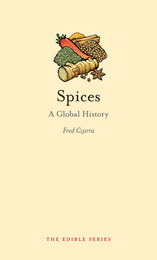
The scent of oregano immediately conjures the comforts of Italian food, curry is synonymous with Indian flavor, and the fire of chili peppers ignites the cuisine of Latin America. Spices are often the overlooked essentials that define our greatest eating experiences. In this global history of spices, Fred Czarra tracks the path of these fundamental ingredients from the trade routes of the ancient world to the McCormick’s brand’s contemporary domination of the global spice market.
Focusing on the five premier spices—black pepper, cinnamon, nutmeg, cloves, and chili pepper—while also relating the story of many others along the way, Czarra describes how spices have been used in cooking throughout history and how their spread has influenced regional cuisines around the world. Chili peppers, for example, migrated west from the Americas with European sailors and spread rapidly in the Philippines and then to India and the rest of Asia, where the spice quickly became essential to local cuisines. The chili pepper also traveled west from India to Hungary, where it eventually became the national spice—paprika.
Mixing a wide range of spice fact with fascinating spice fable—such as giant birds building nests of cinnamon—Czarra details how the spice trade opened up the first age of globalization, prompting a cross-cultural exchange of culinary technique and tradition. This savory spice history will enliven any dinner table conversation—and give that meal an unforgettable dash of something extra.

As Smith demonstrates, sugar’s past is chockfull of determined adventurers: relentless sugar barons and plantation owners who worked alongside plant breeders, food processors, distributors, and politicians to build a business based on our cravings. Exploring both the sugarcane and sugar beet industries, he tells story after story of those who have made fortunes and those who have met demise all because of sugar’s simple but profound hold on our palates. Delightful and surprisingly action-packed, this book offers a layered and definitive tale of sugar and the many people who have been caught in its spell—from barons to slaves, from chefs to the countless among us born with that insatiable devil, the sweet tooth.

From marzipan pigs and nutty nougat to bubblegum and bonbons, Sweets and Candy looks beneath the glamour and sparkle to explore the sticky history of confectionary. Methods for making sweets can be traced back to the importance of sugar in Arabic medicine and the probable origin of this practice in ancient India—a place where sweetness is still important for both humans and gods. Gorging on gobstoppers from these early candy antecedents to modern-day delectables, Laura Mason describes the bewildering and fascinating ways in which different cultures have made, consumed, valued, and adored sweets throughout history. Featuring a selection of mouthwatering illustrations and scrumptious recipes to try at home, this global candy trail will delight sweet-toothed foodies and history buffs everywhere.
READERS
Browse our collection.
PUBLISHERS
See BiblioVault's publisher services.
STUDENT SERVICES
Files for college accessibility offices.
UChicago Accessibility Resources
home | accessibility | search | about | contact us
BiblioVault ® 2001 - 2024
The University of Chicago Press









